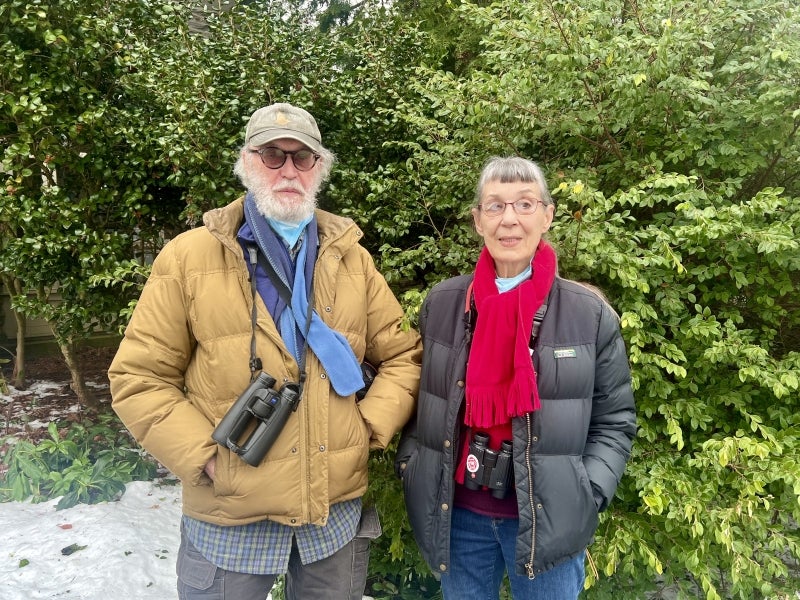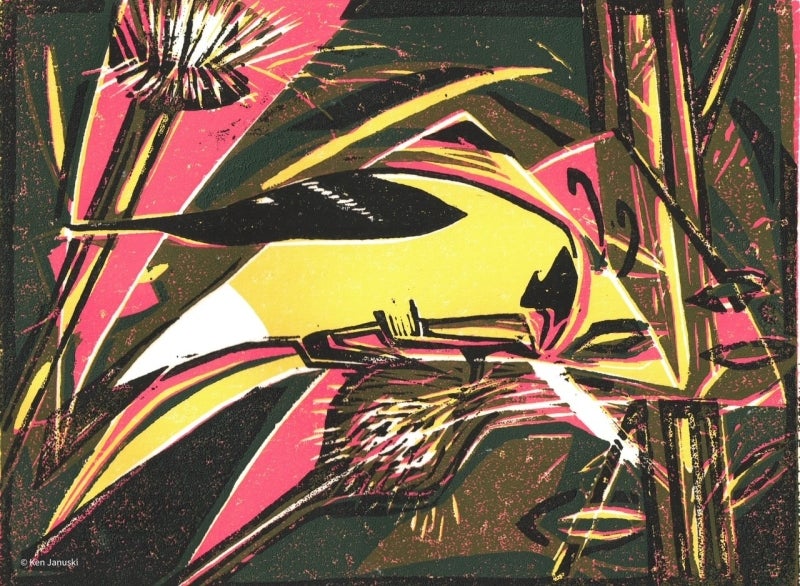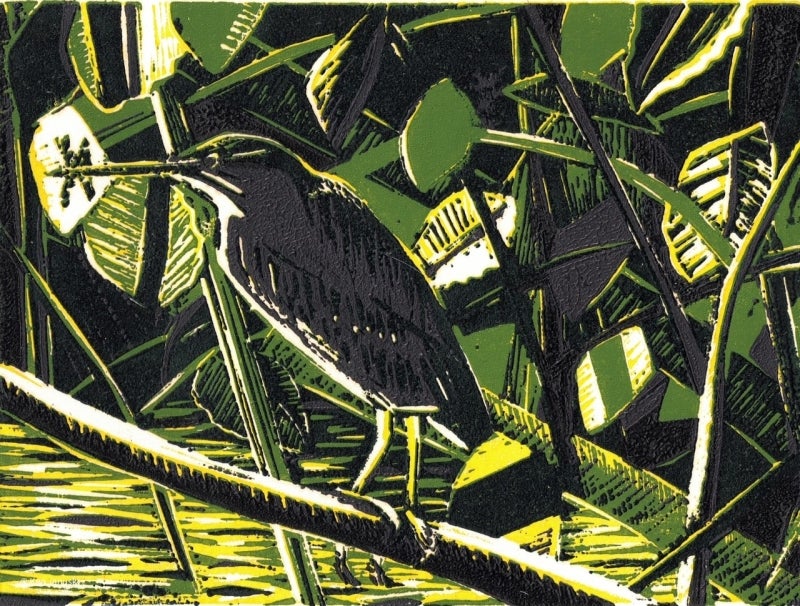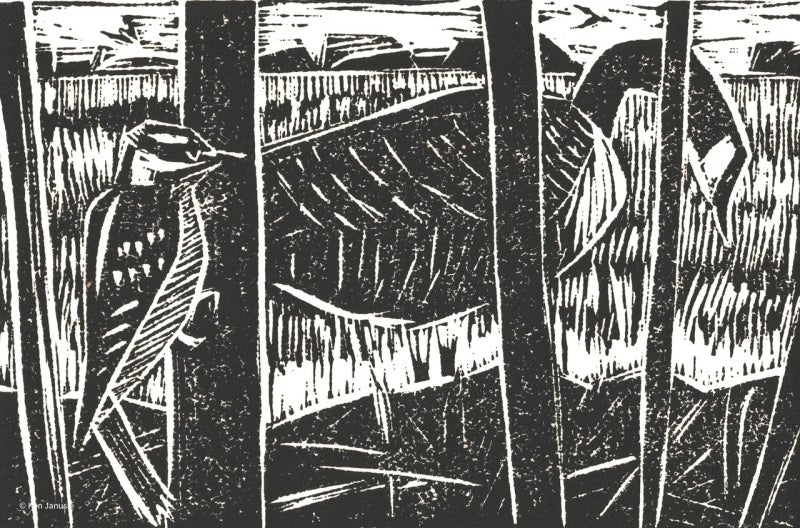Birds as Artistic Muse

Since 1998, Ken Januski and Jerene Schroeder have been members and frequent birders at the Morris. Their birding journey has strong roots here, offering them some of their first major sightings as well as inspiration for Ken’s nature-based artwork. Now, twenty-six years later, Ken is ranked as Morris’s top birder on eBird, having seen 160 species in the Gardens so far.
But Ken and Jerene aren’t in it for the numbers.
The married couple realized the potential of birding at the Morris when, during a visit to the now defunct plant sale, they heard the call of yellow-throated vireos in the trees. They soon started birding at the Morris twice a week, and years later they even volunteered to monitor the bluebird boxes at Bloomfield Farm.
One reason the couple enjoys birding at the Morris is the variety and vastness of the Natural Areas. Ken often brings his spotting scope, which needs a lot of space, and he found he could comfortably set up in the Wetland. The scope not only offers a more magnified view than binoculars, but it also enables an artist to watch birds with two free hands to draw. “A lot of my education about birds occurred from drawing them at the Morris,” says Ken. “Most people don’t work that way—they work from photographs, but you miss so much in photographs. Plus, there’s not the thrill.”

By Ken Januski.

Ken started his art career as an abstract painter, receiving an MA from Berkeley and an MFA from Cornell in Studio Art. He got disenchanted with the contemporary art world in the early 1990s, when too much verbiage began accompanying artwork. He began looking toward nature, and when him and Jerene joined as Morris members, the world of birds became his muse. All of his artwork is now based on birds and other wildlife that he has personally seen and often sketched in the field, and he has exhibited his work at the Sumi-Fusion Exhibition at the International Moku Hanga Conference in Japan and the Society of Wildlife Artists Annual Show in London. He was also a finalist for BBC Wildlife Artist of the Year in the International Artist category in 2011 and 2012.
“It’s a very complex world,” says Ken. “I like the idea of showing real behavior.” He describes a sighting along Paper Mill Run, where a downy woodpecker was backdropped by two Canada geese feeding on grass. He did some quick sketches, and went on to create a linocut print of the scene: “It’s an unusual juxtaposition, but that’s part of the fun of birding—seeing these unusual things that happen. The more you learn about birds and nature in general, the more you see that. There are a lot of ways to be creative when looking at nature.”
Often times, birders learn to ID through experience and field guides, but for Ken, drawing birds has been his greatest teacher. Early on, his ID skills improved by paying close attention to detail in order to portray accurate representation in his art. He looks closely at not only color pattern, but also shape, behavior, movement, and interaction: “When you get to really look at warblers, for example, you’ll see most of what they’re doing is looking for food, and going in all these contorted positions to look on the undersides of leaves.”

Some of their favorite birding moments at the Morris include seeing a Philadelphia vireo in the Wetland (a rare bird to see in the city, despite its name); noticing a nesting phoebe near the Welcome Center every spring; and the time they witnessed an American kestrel feasting on a robin. Most fondly, though, they saw their first ever bald eagle in the Wetland: It was 2010, the middle of winter, and accordingly to eBird, it was the first recorded sighting of this then rare bird at the Morris. Ken went home to paint a watercolor of the bald eagle flying off. “There’s always a new surprise here,” he says.
“The more you know, the more there is to learn—it’s never-ending,” says Jerene. “Even times when there aren’t a lot of birds, you can just watch a pair of birds interact, and you learn a whole lot. There’s a lot of birders that see the bird, write it down, and tick it off their list. But we like to study their behaviors.”
“And we’re very slow birders in that way,” adds Ken. “We don’t really care about getting a high count, and so in many ways, we’re atypical birders.”
Learn more about birding at the Morris →
Take a birding course at the Morris →
For more information about Ken Januski’s artwork, visit his website.
